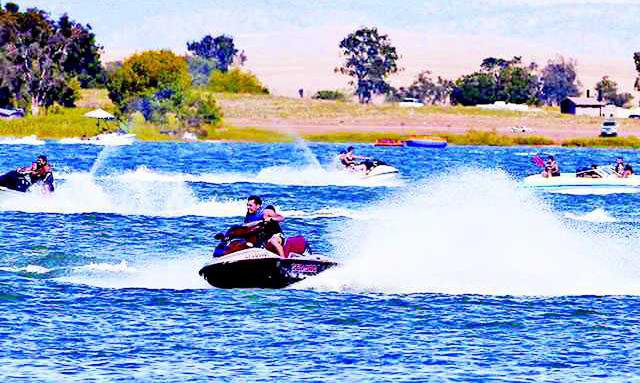Woodward Reservoir will remain at its current level for the foreseeable future.
That means unless a deluge of rain and snow pounds Northern California over the course of the next month, the popular reservoir will be operating at its winter level until local water experts determine that it’s okay to start raising the level along the banks.
Last week the South San Joaquin Irrigation District, which has independent storage rights to use Woodward as a regulating reservoir and operate a water treatment facility, issued a report outlining data that showed that when the reservoir is at its peak level, it loses more water to evaporation and seepage than when it is at its lowest operational level. Keeping the flows down, according to a report prepared by SSJID Engineer Forrest Killingsworth, would save the district roughly 9,000 acre-feet of water.
The issue needed to be discussed according to SSJID General Manager Jeff Shields, because the “conservation fund” that the agency has with the Bureau of Reclamation at New Melones Reservoir, of which the inflow dictates SSJID’s and Oakdale Irrigation District’s water allotments, is currently forecasted to be depleted by the end of the year.
The decision – which came in a 4-1 vote by the SSJID’s board of directors at the Tuesday, Feb. 25 meeting – will not only prevent boating and swimming in the reservoir, but it’ll also effectively maroon the concessions and the facilities operated by the Stanislaus County Parks and Recreation Department.
The directors will reevaluate the status of the matter when they meet again in April.
Woodward, located just north of Oakdale, serves as the final filling point for Stanislaus River water after it’s released from a diversion at Goodwin Dam – serving as a holding station designed and implemented by farmers for irrigation purposes, and also provides drinking water for the cities of Manteca, Lathrop, and Tracy.
And while Director Dave Kamper said that he feels for Stanislaus County and anything that the decision may cause – Woodward comprises roughly $2 million worth of the Parks and Recreation budget – he’s also conscious of the value of the water that’s retained there and how much that’s worth in the amount of crops it can help produce or maintain.
“We’re talking about $6 million worth of water, and 400- or 500-acres worth of crops,” Kamper said. “That’s huge this year – and that’s not even mentioning what that’s going to be if those crops get water.”
Stanislaus County Assistant Executive Officer Keith Boggs pleaded with the board, when it became apparent that maintaining the reservoir level just above the operating mark – between 192-feet and 195-feet – to at least consider raising the level in May to allow for “bodily contact.” Doing so, while it would cost the district water, would allow for the county operations to continue.
And not even a carrot at the end of a stick was enough to overlook the value of what has quickly become California’s most sought-after commodity.
When Stanislaus County Parks and Recreation Director Jami Aggers spoke she offered up a $250,000 “drought fee” to offset the money that would stem for seepage and evaporation as a result of keeping the reservoir at a level that would allow on-water recreational activities – at 202-feet or above.
But Director John Holbrook quickly pointed out that it wasn’t necessarily a situation about money, but a resource that, once gone, simply can’t be replaced by writing a check.
Director Ralph Roos was even more direct.
“I don’t think that there’s a board member up here that wants to not let you run your service,” he said. “We’re all hoping for rain and snow.”
The relationship between SSJID and Stanislaus County dates back more than 50 years. The two entities have entered into long-term contracts – one for 30 years and another for 25 – that open up the reservoir for valley residents looking to enjoy an outdoor experience close to home.
According to Aggers, the operation currently employs six full-time employees and 12 seasonal workers, and a year-long closure would represent a $2 million loss to the county park’s program – likely forcing them to reevaluate other programs due to the loss in revenue.
Director Robert Holmes cast the lone dissenting vote.





